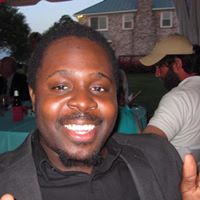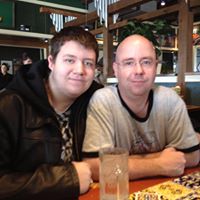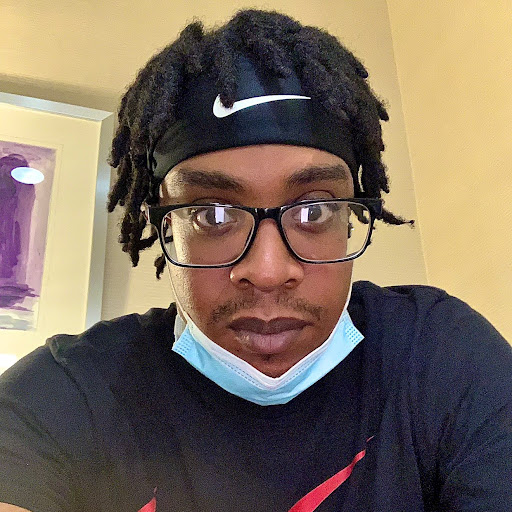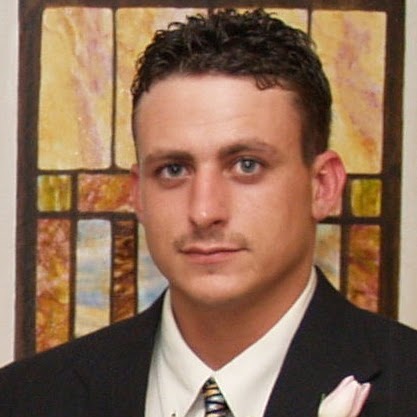Joshua M Watson
age ~41
from Puyallup, WA
Joshua Watson Phones & Addresses
- Puyallup, WA
- San Francisco, CA
- San Bruno, CA
- Daly City, CA
- San Jose, CA
- Suquamish, WA
Work
-
Company:Us army - Fort Lewis, WAAug 2012
-
Position:Senior security manager
Military
Company:
Army
Rank:
Sergeant First Class
Education
-
School / High School:Pierce College- Fort Lewis, WA2012
-
Specialities:General Education
Skills
Top Secret Security Clearance • Operations Security • Instructor/Trainer Qualified • Advanced Leadership Training • Problem Solving • Counseling and oral communication • Microsoft Office Suite • Radio Communications
Ranks
-
Licence:California - Active
-
Date:2005
Lawyers & Attorneys

Joshua Haakon Watson, San Francisco CA - Lawyer
view sourceAddress:
1230 Market St # 612, San Francisco, CA 94102
4154241057 (Office)
4154241057 (Office)
Licenses:
California - Active 2005
Education:
University of California, Hastings College of The Law
Degree - JD
Graduated - 2005
New Mexico Institute of Mining and Technology
University of California, Santa Barbara
Degree - BA
Degree - JD
Graduated - 2005
New Mexico Institute of Mining and Technology
University of California, Santa Barbara
Degree - BA
Specialties:
Personal Injury - 66%
Civil Rights - 34%
Civil Rights - 34%
Isbn (Books And Publications)

Captain Watson's Travels in America: The Sketchbooks and Diary of Joshua Rowley Watson, 1771-1818
view sourceAuthor
Joshua Rowley Watson
ISBN #
0812233840
Us Patents
-
Selectively Paired Imaging Elements For Stereo Images
view source -
US Patent:20210012518, Jan 14, 2021
-
Filed:May 28, 2020
-
Appl. No.:16/886328
-
Inventors:- Seattle WA, US
Barry James O'Brien - Seattle WA, US
Joshua John Watson - Seattle WA, US -
International Classification:G06T 7/55
G06T 7/593
G06T 7/62
H04N 7/18 -
Abstract:This disclosure describes a configuration of an aerial vehicle, such as an unmanned aerial vehicle (“UAV”), that includes a plurality of cameras that may be selectively combined to form a stereo pair for use in obtaining stereo images that provide depth information corresponding to objects represented in those images. Depending on the distance between an object and the aerial vehicle, different cameras may be selected for the stereo pair based on the baseline between those cameras and a distance between the object and the aerial vehicle. For example, cameras with a small baseline (close together) may be selected to generate stereo images and depth information for an object that is close to the aerial vehicle. In comparison, cameras with a large baseline may be selected to generate stereo images and depth information for an object that is farther away from the aerial vehicle.
-
Aerial Vehicle Sensor Positioning
view source -
US Patent:20200413026, Dec 31, 2020
-
Filed:Sep 9, 2020
-
Appl. No.:17/015997
-
Inventors:- Seattle WA, US
Barry James O'Brien - Seattle WA, US
Joshua John Watson - Seattle WA, US
Ricky Dean Welsh - Seattle WA, US -
International Classification:H04N 13/243
H04N 5/247
B64C 39/02
B64D 47/08
H04N 13/239
B64C 29/00
B64C 27/26
B64C 27/20 -
Abstract:Described is an aerial vehicle, such as an unmanned aerial vehicle (“UAV”), that includes a plurality of sensors, such as stereo cameras, mounted along a perimeter frame of the aerial vehicle and arranged to generate a scene that surrounds the aerial vehicle. The sensors may be mounted in or on winglets of the perimeter frame. Each of the plurality of sensors has a field of view and the plurality of optical sensors are arranged and/or oriented such that their fields of view overlap with one another throughout a continuous space that surrounds the perimeter frame. The fields of view may also include a portion of the perimeter frame or space that is adjacent to the perimeter frame.
-
Combined Information For Object Detection And Avoidance
view source -
US Patent:20200108946, Apr 9, 2020
-
Filed:Jul 29, 2019
-
Appl. No.:16/525271
-
Inventors:- Seattle WA, US
Barry James O'Brien - Seattle WA, US
Joshua John Watson - Seattle WA, US -
International Classification:B64D 47/08
H04N 5/33
G08G 5/04
B64C 39/02
H04N 13/239
G06T 7/593
G06K 9/00
H04N 13/271
H04N 13/25
H04N 13/243 -
Abstract:Described is an imaging component for use by an unmanned aerial vehicle (“UAV”) for object detection. As described, the imaging component includes one or more cameras that are configured to obtain images of a scene using visible light that are converted into a depth map (e.g., stereo image) and one or more other cameras that are configured to form images, or thermograms, of the scene using infrared radiation (“IR”). The depth information and thermal information are combined to form a representation of the scene based on both depth and thermal information.
-
Aerial Vehicle Sensor Positioning
view source -
US Patent:20190104297, Apr 4, 2019
-
Filed:Nov 15, 2018
-
Appl. No.:16/191820
-
Inventors:- Seattle WA, US
Barry James O'Brien - Seattle WA, US
Joshua John Watson - Seattle WA, US
Ricky Dean Welsh - Seattle WA, US -
International Classification:H04N 13/243
B64C 39/02
B64D 47/08
H04N 13/239
H04N 5/247 -
Abstract:Described is an aerial vehicle, such as an unmanned aerial vehicle (“UAV”), that includes a plurality of sensors, such as stereo cameras, mounted along a perimeter frame of the aerial vehicle and arranged to generate a scene that surrounds the aerial vehicle. The sensors may be mounted in or on winglets of the perimeter frame. Each of the plurality of sensors has a field of view and the plurality of optical sensors are arranged and/or oriented such that their fields of view overlap with one another throughout a continuous space that surrounds the perimeter frame. The fields of view may also include a portion of the perimeter frame or space that is adjacent to the perimeter frame.
-
Determining Stereo Distance Information Using Imaging Devices Integrated Into Propeller Blades
view source -
US Patent:20180324403, Nov 8, 2018
-
Filed:Jul 20, 2018
-
Appl. No.:16/041441
-
Inventors:- Seattle WA, US
Barry James O'Brien - Seattle WA, US
Joshua John Watson - Seattle WA, US
Scott Michael Wilcox - Kirkland WA, US -
International Classification:H04N 13/128
B64D 47/08
B64D 31/00
B64C 39/02
G06T 7/70
H04N 13/239
G03B 35/02
G01C 3/10
B64C 11/00 -
Abstract:A propeller provided on an aerial vehicle may include a digital camera or other imaging device embedded into a surface of one of the blades of the propeller. The digital camera may capture images while the propeller is rotating at an operational speed. Images captured by the digital camera may be processed to recognize one or more objects therein, and to determine ranges to such objects by stereo triangulation techniques. Using such ranges, a depth map or other model of the surface features in an environment in which the aerial vehicle is operating may be defined and stored or used for any purpose. A propeller may include digital cameras or other imaging devices embedded into two or more blades, and may also use such images to determine ranges to objects by stereo triangulation techniques.
-
Combined Information For Object Detection And Avoidance
view source -
US Patent:20180194489, Jul 12, 2018
-
Filed:Mar 6, 2018
-
Appl. No.:15/913599
-
Inventors:- Seattle WA, US
Barry James O'Brien - Seattle WA, US
Joshua John Watson - Seattle WA, US -
International Classification:B64D 47/08
B64C 39/02
H04N 5/33
G08G 5/04
G06T 7/593
G06K 9/00
G06K 9/20 -
Abstract:Described is an imaging component for use by an unmanned aerial vehicle (“UAV”) for object detection. As described, the imaging component includes one or more cameras that are configured to obtain images of a scene using visible light that are converted into a depth map (e.g., stereo image) and one or more other cameras that are configured to form images, or thermograms, of the scene using infrared radiation (“IR”). The depth information and thermal information are combined to form a representation of the scene based on both depth and thermal information.
-
Aerial Vehicle Optical Sensor Configuration
view source -
US Patent:20180077350, Mar 15, 2018
-
Filed:Sep 14, 2016
-
Appl. No.:15/265793
-
Inventors:- Seattle WA, US
Barry James O'Brien - Seattle WA, US
Joshua John Watson - Seattle WA, US
Ricky Dean Welsh - Bellevue WA, US -
International Classification:H04N 5/232
H04N 5/247
H04N 13/02
B64C 39/02
B64D 47/08 -
Abstract:Described is an aerial vehicle, such as an unmanned aerial vehicle (“UAV”), that includes a plurality of sensors, such as stereo cameras, mounted along a perimeter frame of the aerial vehicle and arranged to generate a scene that surrounds the aerial vehicle. The sensors may be mounted in or on winglets of the perimeter frame. Each of the plurality of sensors has a field of view and the plurality of optical sensors are arranged and/or oriented such that their fields of view overlap with one another throughout a continuous space that surrounds the perimeter frame. The fields of view may also include a portion of the perimeter frame or space that is adjacent to the perimeter frame.
-
Determining Stereo Distance Information Using Imaging Devices Integrated Into Propeller Blades
view source -
US Patent:20180054604, Feb 22, 2018
-
Filed:Aug 22, 2016
-
Appl. No.:15/243844
-
Inventors:- Seattle WA, US
Barry James O'Brien - Seattle WA, US
Joshua John Watson - Seattle WA, US
Scott Michael Wilcox - Bothell WA, US -
International Classification:H04N 13/00
G06T 7/70
H04N 13/02
B64D 47/08
B64C 39/02
B64D 31/00 -
Abstract:A propeller provided on an aerial vehicle may include a digital camera or other imaging device embedded into a surface of one of the blades of the propeller. The digital camera may capture images while the propeller is rotating at an operational speed. Images captured by the digital camera may be processed to recognize one or more objects therein, and to determine ranges to such objects by stereo triangulation techniques. Using such ranges, a depth map or other model of the surface features in an environment in which the aerial vehicle is operating may be defined and stored or used for any purpose. A propeller may include digital cameras or other imaging devices embedded into two or more blades, and may also use such images to determine ranges to objects by stereo triangulation techniques.
License Records
Joshua Hollis Watson
License #:
C009758 - Active
Category:
Social Work
Issued Date:
Sep 11, 2015
Expiration Date:
Jun 30, 2017
Type:
Clinical Social Worker
Resumes

Joshua Watson Olympia, WA
view sourceWork:
US Army
Fort Lewis, WA
Aug 2012 to Oct 2014
Senior Security Manager US Army
Fort Lewis, WA
Feb 2012 to Aug 2012
Operations Supervisor US Army
Fort Lewis, WA
Mar 2007 to Feb 2012
Front Line Supervisor US Army
Fort Lewis, WA
Feb 2005 to Mar 2007
Training Instructor
Fort Lewis, WA
Aug 2012 to Oct 2014
Senior Security Manager US Army
Fort Lewis, WA
Feb 2012 to Aug 2012
Operations Supervisor US Army
Fort Lewis, WA
Mar 2007 to Feb 2012
Front Line Supervisor US Army
Fort Lewis, WA
Feb 2005 to Mar 2007
Training Instructor
Education:
Pierce College
Fort Lewis, WA
2012 to 2014
General Education Noncommisioned Officer Academy
Fort Benning, GA
2007 to 2007
Senior Leaders Course Noncommisioned Officer Academy
Fort Benning, GA
2005 to 2005
Advanced Leadership Course Noncommisioned Officer Academy
Fort Lewis, WA
2001 to 2001
Primary Leadership Developement Course
Fort Lewis, WA
2012 to 2014
General Education Noncommisioned Officer Academy
Fort Benning, GA
2007 to 2007
Senior Leaders Course Noncommisioned Officer Academy
Fort Benning, GA
2005 to 2005
Advanced Leadership Course Noncommisioned Officer Academy
Fort Lewis, WA
2001 to 2001
Primary Leadership Developement Course
Military:
Rank: Sergeant First Class
Branch: ArmyL.i.location.original
Branch: ArmyL.i.location.original
Skills:
Top Secret Security Clearance, Operations Security, Instructor/Trainer Qualified, Advanced Leadership Training, Problem Solving, Counseling and oral communication, Microsoft Office Suite, Radio Communications
Medicine Doctors

Joshua R. Watson
view sourceSpecialties:
Internal Medicine, Internal Medicine - Geriatrics
Work:
Wilmington HealthWilmington Health Brunswick Forest
1333 S Dickinson Dr UNIT 140, Leland, NC 28451
9103710404 (phone), 9103711005 (fax)
1333 S Dickinson Dr UNIT 140, Leland, NC 28451
9103710404 (phone), 9103711005 (fax)
Education:
Medical School
University of North Texas College of Osteopathic Medicine
Graduated: 2010
University of North Texas College of Osteopathic Medicine
Graduated: 2010
Procedures:
Electrocardiogram (EKG or ECG)
Conditions:
Diabetes Mellitus (DM)
Disorders of Lipoid Metabolism
Hypertension (HTN)
Acute Bronchitis
Acute Sinusitis
Disorders of Lipoid Metabolism
Hypertension (HTN)
Acute Bronchitis
Acute Sinusitis
Languages:
English
Spanish
Spanish
Description:
Dr. Watson graduated from the University of North Texas College of Osteopathic Medicine in 2010. He works in Leland, NC and specializes in Internal Medicine and Internal Medicine - Geriatrics. Dr. Watson is affiliated with New Hanover Regional Medical Center.

Joshua Thomas Watson
view sourceSpecialties:
Internal Medicine
Plaxo

Joshua Watson
view source
joshua watson
view sourceNot available
Classmates

Joshua Watson
view sourceSchools:
Davis Aerospace High School Detroit MI 2002-2006
Community:
Dalida Joseph

Joshua Watson
view sourceSchools:
East Hill Christian High School Pensacola FL 2000-2004
Community:
Rick Johnson, Jennifer Sikes, Melissa Hires

Joshua Watson
view sourceSchools:
Chartiers Valley High School Bridgeville PA 1995-1999
Community:
Tom Kumpf

Joshua Watson
view sourceSchools:
Irion County High School Mertzon TX 2002-2006
Community:
Carolyn Lawdermilk

Joshua Watson
view sourceSchools:
Edisto High School Cordova SC 1995-1999
Community:
Bill Clements, Thero Jennings

Joshua Watson
view sourceSchools:
Oak Hills High School Atascadero CA 1991-1995
Community:
Terry Thompson, Patti Mortimer, Elaine Maynard, Tracy Tabin

Joshua Watson
view sourceSchools:
South Carolina Governor's School for Arts Greenville SC 2000-2002
Community:
Willie Johnson

Joshua Watson
view sourceSchools:
Burruss Elementary School Marietta GA 1992-1996
Community:
Tiffany Prather, Gerquika Turner, Paige Padgett, Wendy Proctor, Mark Bost, Patrick Smith

Joshua Quanderius Watson
view source
Joshua Jeremiah Watson
view source
Joshua Randal Watson
view source
Joshua Jwatts Watson
view source
Joshua Isaiah Watson
view source
Joshua Hanglow Watson
view source
Joshua Jeanette Watson
view source
Joshua Ralston Watson
view sourceGoogleplus

Joshua Watson
Lived:
Puyallup, wa
Happy valley, or
Milwaukie, or
Damascus, or
Happy valley, or
Milwaukie, or
Damascus, or
Work:
The sygma network
Education:
Clackamas highschool, Clackamas community college
Bragging Rights:
I did it on my own

Joshua Watson
Lived:
Seattle, WA
Salem, MA
Kendall, WA
Bellingham, WA
Coldwater, MI
Salem, MA
Kendall, WA
Bellingham, WA
Coldwater, MI
Education:
University of Washington - English
Relationship:
Married

Joshua Watson
Work:
Oklahoma Christian University - Communication Professor (2008)
McNeely Pigott & Fox Public Relations - Assistant account executive (2006-2008)
McNeely Pigott & Fox Public Relations - Assistant account executive (2006-2008)
Education:
University of Oklahoma - Communication, East Tennessee State University - Communication, Freed-Hardeman University - Marketing

Joshua Watson
Education:
Full Sail University - Music Production

Joshua Watson

Joshua Watson

Joshua Watson

Joshua Watson
Youtube
Myspace
News

Pensacola Navy base shooting victim 'saved countless lives,' family says
view source- When reached byphone, Watsons father, Benjamin, said his son was the officer on deck at the time of the shooting. Joshua Watson, who is called Kaleb by some family members, was shot at least five times, he said.
- Date: Dec 07, 2019
- Category: Headlines
- Source: Google

Google+ users, upset over data leak, sue Google
view source- the Google+ platform, Defendants kept silent for at least seven months, making a calculated decision not to inform users that their Personal Information was compromised, further compromising the privacy of consumers information and exposing them to risk of identity theft or worse," Joshua Watson,
- Date: Oct 09, 2018
- Category: Headlines
- Source: Google
Flickr
Get Report for Joshua M Watson from Puyallup, WA, age ~41













